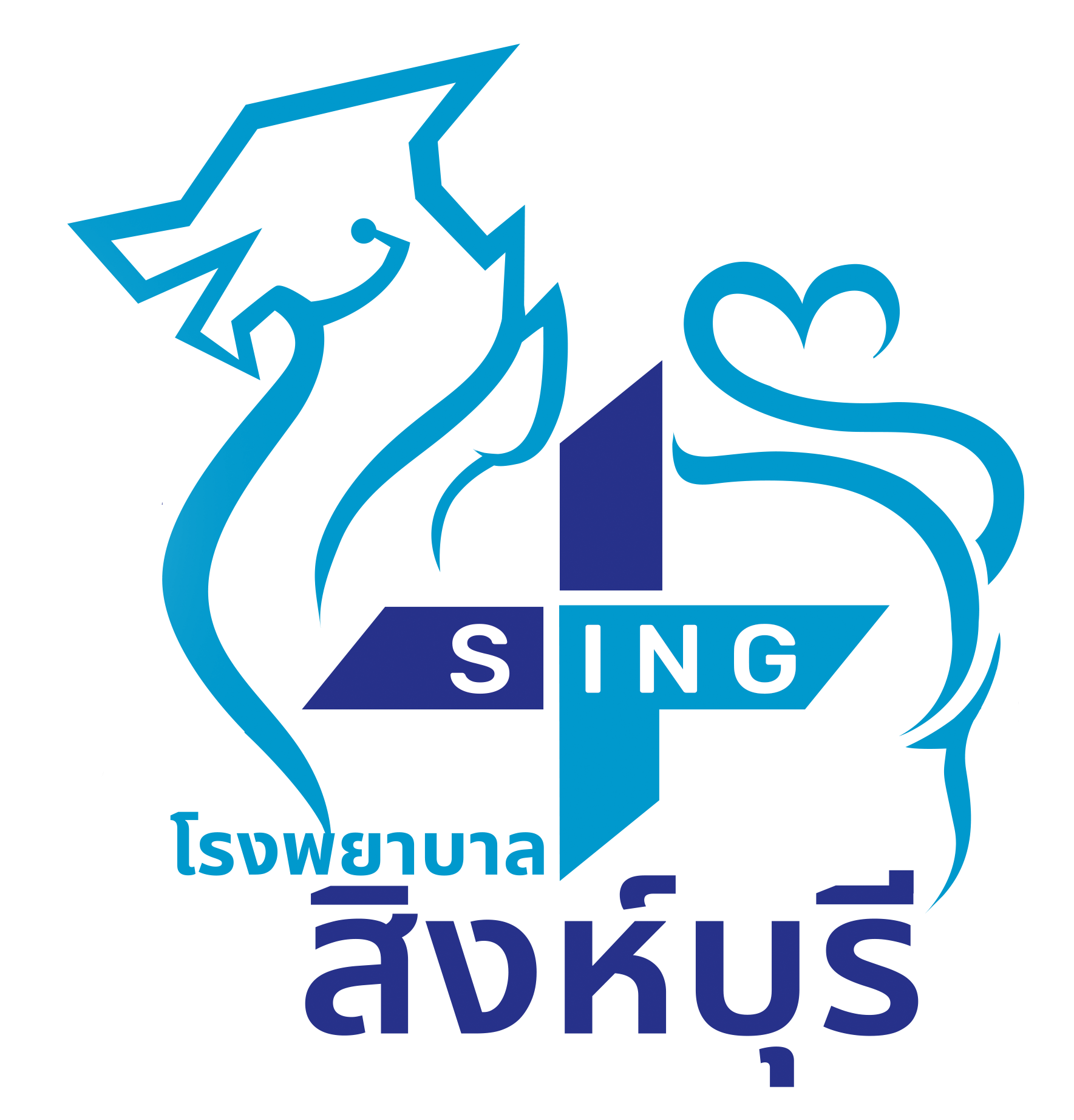Predictors of Failure of Neurological Improvement in Patients with Acute Ischemic Stroke after Thrombolytic Therapy
Keywords:
Acute ischemic stroke, Poor neurological recovery, Thrombolytic drugsAbstract
The administration of rtPA thrombolytic drugs within 4.5 hours of stroke onset is the recommended treatment for acute ischemic stroke; however, neurological recovery is not achieved in some patients. Thus, the objective of this study was to study factors affecting neurological recovery in order to provide recommendations for the formulation of a treatment plan and treatment guidelines. This retrospective cohort study was performed using the medical records of 267 patients with acute ischemic stroke who were treated with thrombolytic drugs and attended the emergency room at Saraburi Hospital between October 1, 2015 and September 30, 2021. Statistical analysis was then performed using Chi square test or Fisher’s exact test, t-test, and multivariable logistic regression analysis.
The results revealed that factors affecting neurologic recovery in the patients were blood glucose > 110 mg/dL with an odd ratio of 2.04 (95%CI 1.04,4.03, p= 0.039), abnormalities in CT Brain including small infarction with an odd ratio of 2.73 (95%CI 1.53,6.16, p= 0.010), and large vessel occlusion with an odd ratio of 5.34 (95%CI 2.52, 11.33, p= <0.001).
Development of a patient care system especially correct CT Brain interpretation can determine whether thrombolytic drugs or treatment options would be effective. For example, if CT Brain reveals large vessel occlusion, mechanical thrombectomy may be considered. In addition, a blood glucose level of higher than 110 mg/dL may result in poor neurological recovery in patients with acute ischemic stroke.
References
Suwanwela NC. Stroke Epidemiology in Thailand. J Stroke. 2014;16(1):1-7.
Powers WJ, Rabinstein AA, Ackerson T, Adeoye OM, Bambakidis NC, Becker K, et al. 2018 Guidelines for the Early Management of Patients with Acute Ischemic Stroke: A Guideline for Healthcare Professionals from the American Heart Association/American Stroke Association. Stroke. 2018;49:e46–e110.
Hacke W, Donnan G, Fieschi C, Kaste M, von Kummer R, Broderick JP, et al. ATLANTIS Trials Investigators; ECASS Trials Investigators; NINDS rt-PA Study Group Investigators. Association of outcome with early stroke treatment: pooled analysis of ATLANTIS, ECASS, and NINDS rt-PA stroke trials. Lancet. 2004 Mar 6;363(9411):768-774.
Wardlaw JM, Murray V, Berge E, Del Zoppo G, Sandercock P, Lindley RL, et al. Recombinant tissue plasminogen activator for acute ischaemic stroke: an updated systematic review and meta-analysis. Lancet. 2012;379(9834):2364–2372.
Yaghi S, Willey JZ, Cucchiara B, Goldstein JN, Gonzales NR, Khatri P, et al. Treatment and Outcome of Hemorrhagic Transformation After Intravenous Alteplase in Acute Ischemic Stroke: A Scientific Statement for Healthcare Professionals from the American Heart Association/American Stroke Association. Stroke. 2017;48:e343–e361.
Wouters A, Nysten C, Thijs V, Lemmens R. Prediction of outcome in patients with acute ischemic stroke based on initial severity and improvement in the first 24 h. Front Neurol. 2018;9(308):1-6.
Soize S, Fabre G, Gawlitza M, Serre I, Bakchine S, Manceau PF, et al. Can early neurological improvement after mechanical thrombectomy be used as a surrogate for final stroke outcome? J Neurointerv Surg. 201;11(5):450–454.
Agarwal S, Scher E, Lord A, Frontera J, Ishida K, Torres J, et al. Redefined Measure of Early Neurological Improvement Shows Treatment Benefit of Alteplase over Placebo. Stroke. 2020;51(4):1226-1230.
Nam HS, Lee KY, Han SW, Kim SH, Lee JY, Ahn SH, et al. Prediction of long-term outcome by percent improvement after the first day of thrombolytic treatment in stroke patients. J Neurol Sci. 2009;281(1–2):69–73.
Jantasri S, Tiamkao S, Sawanyawisuth K. A 2-point difference of NIHSS as a predictor of acute ischemic stroke outcome at 3 months after thrombolytic therapy. Clin Neurol Neurosurg. 2020;198(106206):1-6.
Sinsoongsud P. Factors Affecting Outcome in Acute Ischemic Stroke Patients with Intravenous Recombinant Tissue Plasminogen Activator (rtPA) Treatment at the Faculty of Medicine Vajira Hospital. Thai journal of neurology. 2021;37(2):1–9.
Wahlgren N, Ahmed N, Eriksson N, Aichner F, Bluhmki E, Dávalos A, et al. Multivariable analysis of outcome predictors and adjustment of main outcome results to baseline data profile in randomized controlled trials: Safe implementation of thrombolysis in Stroke-MOnitoring STudy (SITS-MOST). Stroke. 2008;39(12):3316–3322.
Kent DM, Selker HP, Ruthazer R, Bluhmki E, Hacke W. The stroke-thrombolytic predictive instrument: A predictive instrument for intravenous thrombolysis in acute ischemic stroke. Stroke. 2006;37(12):2957–2962.
Kent TA. Predicting Outcome of IV Thrombolysis–Treated Ischemic Stroke Patients: the Dragon Score. Neurology. 2012;78(17):1368.
Saposnik G, Fang J, Kapral MK, Tu J V., Mamdani M, Austin P, et al. The iScore predicts effectiveness of thrombolytic therapy for acute ischemic stroke. Stroke. 2012;43(5):1315–1322.
Downloads
Published
How to Cite
Issue
Section
License
Copyright (c) 2023 Singburi Hospital Journal

This work is licensed under a Creative Commons Attribution-NonCommercial-NoDerivatives 4.0 International License.
บทความที่ได้รับการตีพิมพ์เป็นลิขสิทธิ์ของโรงพยาบาลสิงห์บุรี
ข้อความที่ปรากฏในบทความแต่ละเรื่องในวารสารวิชาการเล่มนี้เป็นความคิดเห็นส่วนตัวของผู้เขียนแต่ละท่านไม่เกี่ยวข้องกับโรงพยาบาลสิงห์บุรี และบุคคลากรท่านอื่นๆในโรงพยาบาลฯ แต่อย่างใด ความรับผิดชอบองค์ประกอบทั้งหมดของบทความแต่ละเรื่องเป็นของผู้เขียนแต่ละท่าน หากมีความผิดพลาดใดๆ ผู้เขียนแต่ละท่านจะรับผิดชอบบทความของตนเองแต่ผู้เดียว






